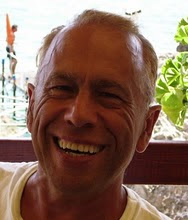The thinking about geriatrics in Chinese medicine has been dominated by Kidney deficiency for centuries. As Kidney-Jing declines as we age, the clinical approach to the treatment of the elderly has been based largely on tonifying the Kidneys.
However, modern diseases of the elderly that account for 90% of mortality (cancer, heart disease and stroke) are characterized by Fullness. Quite simply, we do not die of Kidney deficiency but of Phlegm, Blood stasis and Internal Wind.
The most common pathogenic factors (and those leading to serious diseases) are:
Phlegm
Blood stasis
Internal Wind
Apart from the major diseases of the elderly such as cancer, stroke and heart disease, very many symptoms and signs that occur in old age are caused by Phlegm and/or Blood stasis. The following is a partial list.
GERIATRIC SYMPTOMS/SIGNS
•Otosclerosis: Phlegm/Blood stasis
•Cataract: Phlegm
•Macular degeneration (vascular, lack of blood nourishment): Blood stasis
•Dry eyes: may be due to Blood stasis
•Alzheimer: Phlegm (the neurofibrillary tangles and plaques in the brain are a form of
Phlegm)
•Parkinson: Wind
•Poor memory: is often due to Phlegm
•Brain muzziness: Phlegm
•Dizziness: Phlegm
•Epiretinal membrane: Phlegm
•Macules: Blood stasis
•Dry skin: in the elderly may be due to Blood stasis
•Itching: Phlegm/Wind
•Numbness: Phlegm/Wind
•Hair loss: may be due to Blood stasis
The following three Tables list the major diseases of the elderly with the pathology they are due to.
PHLEGM - BLOOD STASIS - WIND
Heart disease √ √
Angina √ √
Arteriosclerosis √ √
Thrombosis √
Atheroma √
Hypertension √ √ √
PHLEGM BLOOD STASIS WIND
Stroke √ √ √
Cholesterol √
Chronic bronchitis √
Cancer √ √
Diabetes √ √
Chronic nephritis √
PHLEGM BLOOD STASIS WIND
Prostatic hypertrophy/cancer √ √
Parkinson √
Alzheimer √ √
Trigeminal neuralgia √
Dizziness √ √
Many of the symptoms of the elderly are due to Phlegm:
Heart: mental confusion, feeling of oppression in the chest
Gall-Bladder: stones, nausea, inability to digest fats
Joints: bone deformities, pain, rigidity
Lungs: cough with mucus, feeling of oppression of the chest, asthma, breathlessness
Stomach: lack of appetite, digestive problems, hiatus hernia, acid reflux.
Skin: greasy skin, sweating, yellow moles.
TONGUE DIAGNOSIS IN THE ELDERLY
This has already been discussed in a previous blog (April 2010). The major pathogenic factors of the elderly manifest on the tongue with the following signs:
Phlegm: swollen tongue body, sticky coating
Blood stasis: purple, stiff body
Internal Wind: stiff, moving deviated.
For example, if we see a tongue that is swollen, purple and stiff, it indicates all three pathogenic factors of Phlegm, Blood stasis and internal Wind. When I see a tongue like that in an elderly patient, I actively invigorate Blood and resolve Phlegm for prevention.
TREATMENT PRINCIPLES IN DISEASES OF THE ELDERLY
Considering the above, I believe the most important treatment principles in the elderly are:
1) Invigorate Blood and eliminate stasis
2) Resolve Phlegm
3) Extinguish (internal) Wind
Some people think that eliminating pathogenic factors (with herbal medicine or acupuncture but especially with herbal medicine) may “weaken” the elderly. I have never found that to be true in practice: if an elderly person has Phlegm and Blood stasis, they will not be “weakened” by resolving Phlegm and invigorating Blood. Of course, one does need to adapt one’s doses to age so that dosages of herbs for the elderly should be lower than those for young people.
Thursday, January 28, 2016
Subscribe to:
Posts (Atom)





